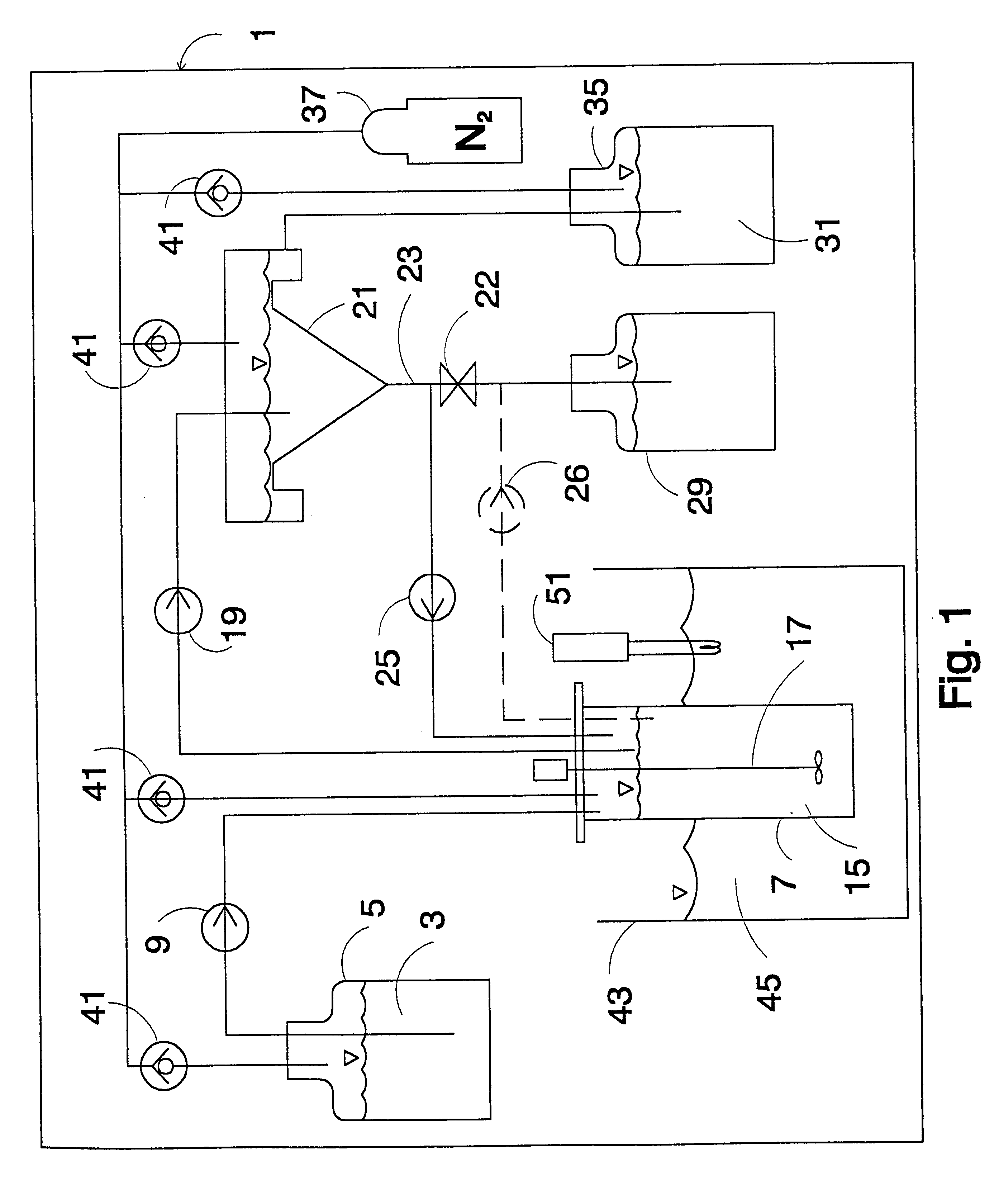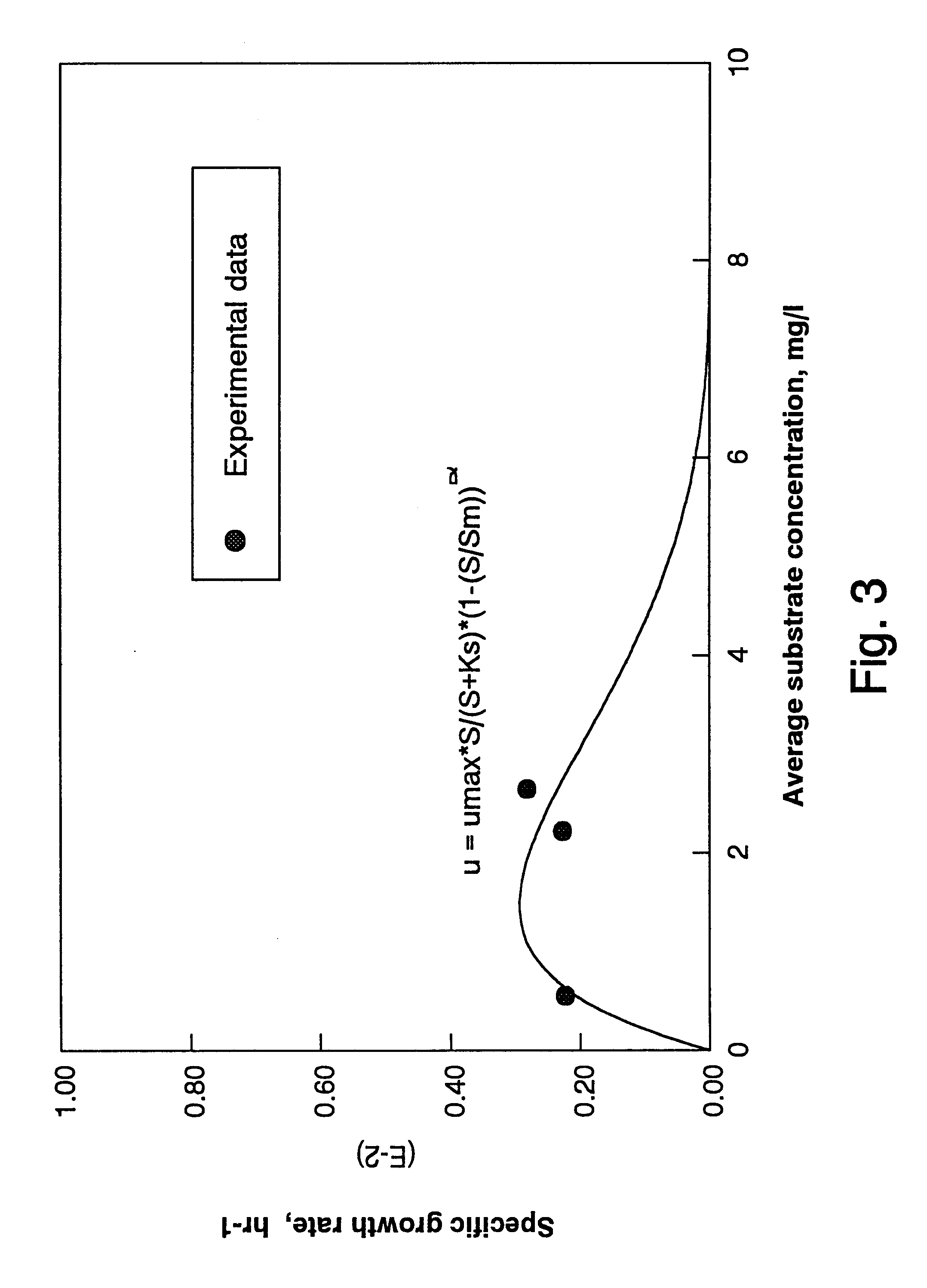Anaerobic biodegradation of unsaturated, saturated, aromatic and halogenated hydrocarbons
a technology of aromatic and halogenated hydrocarbons and biodegradation, which is applied in the nature of treatment water, multi-stage water/sewage treatment, bacteria-based processes, etc., can solve the problems of large amounts of hazardous waste and most troublesome of these wastes are organic solvents
- Summary
- Abstract
- Description
- Claims
- Application Information
AI Technical Summary
Problems solved by technology
Method used
Image
Examples
working example
An engineering prototype was designed to demonstrate the removal of the aromatic hydrocarbons (benzene, ethylbenzene, toluene, xylenes, phenol and cresols) and the chlorinated hydrocarbons (PCE, TCE and TCA) from a simulated waste stream. Design of the prototype was based on the results of the bioprocess model parameter estimation studies of a denitrifying culture that is capable of degradation of a variety of dissolved hydrocarbons. The denitrifying culture, identified as YES01, was obtained by enrichment over a 1+year period in a low-dilution rate chemostat inoculated with biological material obtained from a variety of hazardous waste sites. The chemostat was fed with a medium that contained aromatic hydrocarbons and chlorinated hydrocarbons. The culture was deposited with accession number ATCC 55712 under U.S. Patent and Trademark Office rules with the American Type Culture Collection (ATTC) on Sep. 20, 1995, which was during the pendency of the patent application of this applica...
PUM
 Login to View More
Login to View More Abstract
Description
Claims
Application Information
 Login to View More
Login to View More - R&D
- Intellectual Property
- Life Sciences
- Materials
- Tech Scout
- Unparalleled Data Quality
- Higher Quality Content
- 60% Fewer Hallucinations
Browse by: Latest US Patents, China's latest patents, Technical Efficacy Thesaurus, Application Domain, Technology Topic, Popular Technical Reports.
© 2025 PatSnap. All rights reserved.Legal|Privacy policy|Modern Slavery Act Transparency Statement|Sitemap|About US| Contact US: help@patsnap.com



